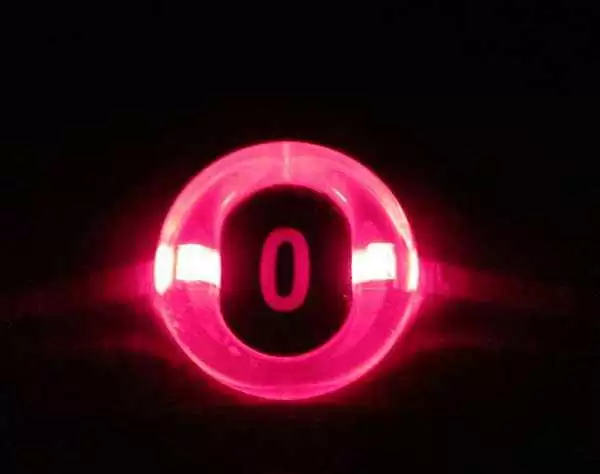
Celiac.com 06/30/2017 - Dear attending physician: If you are reading this it is because your patient either expects you to refuse or you have refused to test them for celiac disease. You may believe, in keeping with prior training, that this patient does not display the signs or symptoms associated with celiac disease. However, the symptom complex of celiac disease has recently undergone dramatic changes, beginning with the understanding that celiac disease is a systemic, rather than an intestinal ailment. World renowned researchers have weighed in on this issue, with peer reviewed reports that repeatedly establish the protean manifestations of celiac disease. They defy prior algorithms for symptom assessment toward diagnosing celiac disease. In the past, undiagnosed celiac patients were often identified as asymptomatic because their symptoms were simply not diarrhea, abdominal bloating, and muscle wasting. However, the Celiac Disease Center at the University of Chicago lists more than 300 presenting symptoms of celiac disease (1). The same group also offers a list of symptoms that demonstrate the wide range of apparently unrelated symptoms that can indicate celiac disease, only the first two of which represent these classical symptoms (2).
- Recurring abdominal bloating and pain
- Chronic or recurrent diarrhea
- Constipation
- Nausea or emesis
- Liver and biliary tract disorders (increased serum transaminases, primary sclerosing cholangitis)
- Weight loss
- Pale, foul-smelling stool
- Iron-deficiency anemia unresponsive to iron therapy
- Fatigue
- Failure to thrive or short stature
- Delayed puberty
- Arthralgia
- Tingling numbness in the legs
- Pale sores inside the mouth
- Dermatitis herpetiformis
- Abnormal dentition (tooth discoloration, loss of enamel)
- Unexplained infertility or recurrent miscarriage
- Osteopenia or osteoporosis
- Peripheral neuropathy
- Psychiatric disorders (anxiety or depression)
Please remember that any one or more of the above symptoms and/or ailments may indicate untreated celiac disease, so testing for celiac disease is an important, inexpensive step toward assisting a patient to resolve these troubling, sometimes debilitating, symptoms.
Celiac.com Sponsor (A12):
Overweight and obesity may also indicate underlying celiac disease. Today's affluence and accompanying food surpluses permit people who are not absorbing nutrients efficiently to eat enough to more than compensate for otherwise calorically deficient diets. Thus, only a minority of celiac disease cases present with classical symptoms in most of the first world. In fact, some reports indicate that overweight patients with celiac disease are as common as those who are underweight ( 3, 4, 5). This is why researchers have long employed the iceberg metaphor to describe the mass of people with celiac disease. The vast majority these people with celiac disease remain undiagnosed (6). Until sensitive and specific serological screening tools became available, very few cases were diagnosed and celiac disease was erroneously considered rare.
In addition to alleviating quite a lot of human suffering, early detection offers some rather large economies for the health care system, as many of the more serious ailments that often befall those with untreated celiac disease may be averted through these inexpensive serological tests and subsequent prescription of a strict gluten free diet.
Prior to the therapeutic use of a gluten free diet, mortality was reported at 36% among 73 children with celiac disease (7). Admittedly, it is likely that these were the more serious cases and perhaps some cases of misdiagnosis. However, even as recently as 1989, adult celiac patients experienced almost double the early mortality rate seen in the general population (8), so an early diagnosis and treatment of celiac disease is not just helpful in mitigating current symptoms, it is a powerful form of preventive medicine that is coincidental to the appropriate diagnosis and treatment of celiac disease.
Let me expand on that last comment a little further. Chronic depression (9), ADHD (10), neurological (11) and neuromuscular disorders(12) treatment-resistant iron deficiency (13, 14), impaired lung function (15, 16) a variety of lymphomas including B cell and T cell (17, 18, 19) and adenocarcinomas (20, 21) dental enamel defects (22, 23) autoimmune thyroid disease (24, 25 ) autoimmunity in general (26) type 1 diabetes (27, 28) kidney disease (29) liver disease (30, 31) skin disease (32, 33) seizure disorders (34) gait disorders (35) obesity (36) fatigue (37) anxiety (38) infertility (39) osteoporosis (40) learning disorders (41, 42) aphasia (43) and many more such sequels to untreated celiac disease (44) impose an enormous economic burden on our health system and education system. This burden weighs on most levels of government, private insurance companies, families, and individuals. Much of this unnecessary cost is ultimately passed along to taxpayers and/or are incorporated into insurance premiums. We all pay.
And the human costs are even greater. Attention deficits and learning disabilities impose life-long inhibitions on success and are corrosive to self esteem. Depression robs us of individual, economic and social achievements, as well as denying us the day-to-day pleasures of life. Similarly, anxiety and infertility are socially isolating and heartbreaking, each in their own ways. Neurological and seizure disorders, including gait disorders, can inhibit our mobility and/or our safe function in this increasingly complex and fast-paced society. Impaired lung function can prohibit or interfere with normal, desirable activities ranging from pleasant walks, sports, and even having sex. Lymphomas and adenocarcinomas can have rapidly fatal consequences. The individual and familial consequences are often devastating. Type 1 diabetes tethers us to insulin injections and requires that we maintain a careful balance between carbohydrate intake and insulin injections. The challenges of this diet dwarfs the inconvenience of a gluten free diet, and a late celiac diagnosis may require that some people comply with both sets of dietary constraints. Skin disease can also exact an enormous social toll, and this is ignores the discomfort and embarrassment of constant itching and scratching, as well as the pain associated with the most common skin diseases connected to celiac disease. Similarly, obesity is not only socially excluding, it poses its own sets of health hazards and life shortening penalties. As osteoporosis becomes more and more common, we can see that society's increasing nutritional dependence on gluten grains may well have set the stage for this degenerative condition, often requiring painful and expensive joint replacement surgeries as our bones gradually crumble and shrink. The dramatic loss of our ability to produce intelligible speech, called aphasia, is by no means the least of this list. The horrific nightmare of being unable to speak to others and have them understand us has been the lived experience of at least one individual. His speech slowly returned after his celiac diagnosis and some time on a gluten free diet. Too many of us are not so lucky.
Many of us see ourselves, and our symptoms, in the many posts, blog comments, listservs and websites that discuss celiac disease. Yet outdated medial training can create barriers to patients seeking testing. However, given the above, peer reviewed data and expert opinions, it is difficult to imagine any reasonable argument for refusing to test a patient who requests serological testing for celiac disease. The cost is minimal and the potential benefits to those who are diagnosed, and our society, are enormous.
Current data suggest a prevalence of celiac disease in the general population at somewhere around 1%, based on serological testing for selective antibodies. However, newly emerging data suggest that a portion of the population that is at least six or seven times the size of the group with celiac disease mounts an innate immune response to gluten grains. The careful characterization of one pathway for activating intestinal inflammation by non-gluten components of these grains, leaves open the possibility of "gliadin-dependent signaling pathways that still remain to be characterized" (45).
Other forms of non-celiac gluten sensitivity, as signaled by IgG class antibodies against gliadin, are seen in 10% to 12% of the general population. Whether these segments of the population with non-celiac gluten sensitivity overlap or are distinct has yet to be determined, so it remains unclear whether they form 10% of our population, or as much as 19% of our culture. Finally, based on a new book by the world renowned pediatric gastroenterologist and allergist, Dr. Rodney Ford, titled Gluten: Zero Global, there is considerable evidence to suggest that, with their many other anti-nutrient, addictive, allergenic, and blood-glucose altering features, gluten grains are a questionable macronutrient food source for humans (46).
Thus, testing for non-celiac gluten sensitivity, may offer many of the benefits that testing for celiac disease offers. Your patient and I are asking that you heed the above data from your professional literature and the first dictum of your profession, by 'first doing no harm', and ordering testing for celiac disease and non-celiac gluten sensitivity.
Sincerely,
Dr. Ron Hoggan, Ed. D.
Sources:
1. http://www.cureceliacdisease.org/wp-content/uploads/2011/09/CDCFactSheets10_SymptomList.pdf
2. http://www.cureceliacdisease.org/medical-professionals/guide/symptoms
3. Dickey W, Kearney N. Overweight in celiac disease: prevalence, clinical characteristics, and effect of a gluten-free diet. Am J Gastroenterol. 2006 Oct;101(10):2356-9
4. Tucker E, Rostami K, Prabhakaran S, Al Dulaimi D. Patients with coeliac disease are increasingly overweight or obese on presentation. J Gastrointestin Liver Dis. 2012 Mar;21(1):11-5
5. Cheng J, Brar PS, Lee AR, Green PH. Body mass index in celiac disease: beneficial effect of a gluten-free diet. J Clin Gastroenterol. 2010 Apr;44(4):267-71.
6. Katz KD, Rashtak S, Lahr BD, Melton LJ 3rd, Krause PK, Maggi K, Talley NJ, Murray JA. Screening for celiac disease in a North American population: sequential serology and gastrointestinal symptoms. Am J Gastroenterol. 2011 Jul;106(7):1333-9. doi: 10.1038/ajg.2011.21. Epub 2011 Mar 1.
7. Hardwick C. 1989, as described in Holmes GKT. Non-malignant complications of coeliac disease. Acta Paediatr Suppl. 412: 68-75. 1996.
8. Logan RF, Rifkind EA, Turner ID, Ferguson A. Mortality in celiac disease. Gastroenterology. 1989 Aug;97(2):265-71.
9. Zipser RD, Farid M, Baisch D, Patel B, Patel D. Physician awareness of celiac disease: a need for further education. J Gen Intern Med. 2005 Jul;20(7):644-6.
10. ADHD (10),Niederhofer H. Association of attention-deficit/hyperactivity disorder and celiac disease: a brief report. Prim Care Companion CNS Disord. 2011;13(3).
11. neurological and neuromuscular disorders (11, 12,) Currie S, Hadjivassiliou M, Clark MJ, Sanders DS,
12. Wilkinson ID, Griffiths PD, Hoggard N. Should we be 'nervous' about coeliac disease? Brain abnormalities in patients with coeliac disease referred for neurological opinion. J Neurol Neurosurg Psychiatry. 2012 Dec;83(12):1216-1221.
13. Hadjivassiliou M, Chattopadhyay AK, Davies-Jones GA, Gibson A, Grünewald RA, Lobo AJ. Neuromuscular disorder as a presenting feature of coeliac disease. J Neurol Neurosurg Psychiatry. 1997 Dec;63(6):770-5.
14. Fayed SB, Aref MI, Fathy HM, Abd El Dayem SM, Emara NA, Maklof A, Shafik A.
Prevalence of celiac disease, Helicobacter pylori and gastroesophageal reflux in patients with refractory iron deficiency anemia. J Trop Pediatr. 2008 Feb;54(1):43-53.
15. Cekın AH, Cekın Y, Sezer C. Celiac disease prevalence in patients with iron deficiency anemia. Turk J Gastroenterol. 2012 Oct;23(5):490-5.
16. Robertson DA, Taylor N, Sidhu H, Britten A, Smith CL, Holdstock G. Pulmonary permeability in coeliac disease and inflammatory bowel disease. Digestion. 1989;42(2):98-103.
17. Edwards C, Williams A, Asquith P. Bronchopulmonary disease in coeliac patients. J Clin Pathol. 1985 Apr;38(4):361-7.
18. Bautista-Quach MA, Ake celiac disease, Chen M, Wang J. Gastrointestinal lymphomas: Morphology, immunophenotype and molecular features. J Gastrointest Oncol. 2012 Sep;3(3):209-25.
19. Leslie LA, Lebwohl B, Neugut AI, Gregory Mears J, Bhagat G, Green PH. Incidence of lymphoproliferative disorders in patients with celiac disease. Am J Hematol. 2012 Aug;87(8):754-9.
20. Elfström P, Granath F, Ekström Smedby K, Montgomery SM, Askling J, Ekbom A, Ludvigsson JF. Risk of lymphoproliferative malignancy in relation to small intestinal histopathology among patients with celiac disease. J Natl Cancer Inst.2011 Mar 2;103(5):436-44.
21. Benhammane H, El M'rabet FZ, Idrissi Serhouchni K, El Yousfi M, Charif I, Toughray I, Mellas N, Riffi Amarti A, Maazaz K, Ibrahimi SA, El Mesbahi O. Small bowel adenocarcinoma complicating coeliac disease: a report of three cases and the literature review. Case Rep Oncol Med. 2012;2012:935183.
22. Vecchio R, Marchese S, Gangemi P, Alongi G, Ferla F, Spataro C, Intagliata E. Laparoscopic treatment of mucinous adenocarcinoma of jejunum associated with celiac disease. Case report. G Chir. 2012 Apr;33(4):126-8.
23. El-Hodhod MA, El-Agouza IA, Abdel-Al H, Kabil NS, Bayomi KA. Screening for celiac disease in children with dental enamel defects. ISRN Pediatr. 2012;2012:763783.
24. Erriu M, Sanna S, Nucaro A, Orrù G, Garau V, Montaldo C. HLA-DQB1 Haplotypes and their Relation to Oral Signs Linked to Celiac Disease Diagnosis. Open Dent J. 2011;5:174-8.
25. Cats EA, Bertens AS, Veldink JH, van den Berg LH, van der Pol WL. Associated autoimmune diseases in patients with multifocal motor neuropathy and their family members. J Neurol. 2012 Jun;259(6):1137-41.
26. Bardella MT, Elli L, De Matteis S, Floriani I, Torri V, Piodi L. Autoimmune disorders in patients affected by celiac sprue and inflammatory bowel disease. Ann Med. 2009;41(2):139-43
27. Nass FR, Kotze LM, Nisihara RM, de Messias-Reason IT, Utiyama SR. Autoantibodies in relatives of celiac disease patients: a follow-up of 6-10 years. Arq Gastroenterol. 2012 Jul-Sep;49(3):199-203.
28. Saadah OI, Al-Agha AE, Al Nahdi HM, Bokhary RY, Bin Talib YY, Al-Mughales JA, Al Bokhari SM. Prevalence of celiac disease in children with type 1 diabetes mellitus screened by anti-tissue transglutaminase antibody from Western Saudi Arabia. Saudi Med J. 2012 May;33(5):541-6.
29. Van den Driessche A, Eenkhoorn V, Van Gaal L, De Block C. Type 1 diabetes and autoimmune polyglandular syndrome: a clinical review. Neth J Med. 2009 Dec;67(11):376-87.
30. Welander A, Prütz KG, Fored M, Ludvigsson JF. Increased risk of end-stage renal disease in individuals with coeliac disease. Gut. 2012 Jan;61(1):64-8.
31. Drastich P, Honsová E, Lodererová A, Jarešová M, Pekáriková A, Hoffmanová I, TuÄková L, Tlaskalová-Hogenová H, SpiÄák J, Sánchez D. Celiac disease markers in patients with liver diseases: A single center large scale screening study. World J Gastroenterol. 2012 Nov 21;18(43):6255-62.
32. Massironi S, Rossi RE, Fraquelli M, Bardella MT, Elli L, Maggioni M, Della Valle S, Spampatti MP, Colombo M, Conte D. Transient elastography in patients with celiac disease: a noninvasive method to detect liver involvement associated with celiac disease. Scand J Gastroenterol. 2012 Jun;47(6):640-8
33. Caproni M, Bonciolini V, D'Errico A, Antiga E, Fabbri P. Celiac disease and dermatologic manifestations: many skin clue to unfold gluten-sensitive enteropathy. Gastroenterol Res Pract. 2012;2012:952753.
34. Criado PR, Criado RF, Aoki V, Belda W Jr, Halpern I, Landman G, Vasconcellos C. Dermatitis herpetiformis: relevance of the physical examination to diagnosis suspicion. Can Fam Physician. 2012 Aug;58(8):843-7.
35. Maniar VP, Yadav SS, Gokhale YA. Intractable seizures and metabolic bone disease secondary to celiac disease. J Assoc Physicians India. 2010 Aug;58:512-5.
36. Hadjivassiliou M, Grünewald R, Sharrack B, Sanders D, Lobo A, Williamson C, Woodroofe N, Wood N, Davies-Jones A. Gluten ataxia in perspective: epidemiology, genetic susceptibility and clinical characteristics. Brain. 2003 Mar;126(Pt3):685-91.
37. Balamtekin N, Demir H, Baysoy G, Uslu N, Yüce A. Obesity in adolescents with celiac disease: two adolescents and two different presentations. Turk J Pediatr. 2011 May-Jun;53(3):314-6.
38. Greenfield JR, Samaras K. Evaluation of pituitary function in the fatigued patient: a review of 59 cases. Eur J Endocrinol. 2006 Jan;154(1):147-57
39. Smith DF, Gerdes LU. Meta-analysis on anxiety and depression in adult celiac disease. Acta Psychiatr Scand. 2012 Mar;125(3):189-93.
40. Choi JM, Lebwohl B, Wang J, Lee SK, Murray JA, Sauer MV, Green PH. Increased prevalence of celiac disease in patients with unexplained infertility in the United States. J Reprod Med. 2011 May-Jun;56(5-6):199-203.
41. Rastogi A, Bhadada SK, Bhansali A, Kochhar R, Santosh R. Celiac disease: A missed cause of metabolic bone disease. Indian J Endocrinol Metab. 2012 Sep;16(5):780-5
42. Knivsberg AM. Urine patterns, peptide levels and IgA/IgG antibodies to food proteins in children with dyslexia. Pediatr Rehabil. 1997 Jan-Mar;1(1):25-33.
43. Zelnik N, Pacht A, Obeid R, Lerner A. Range of neurologic disorders in patients with celiac disease. Pediatrics. 2004 Jun;113(6):1672-6.
44. Case records of the Massachusetts General Hospital. Weekly clinicopathological exercises. Case 43-1988. A 52-year-old man with persistent watery diarrhea and aphasia. N Engl J Med. 1988 Oct 27;319(17):1139-48.
45. Norström F, Sandström O, Lindholm L, Ivarsson A. A gluten-free diet effectively reduces symptoms and health care consumption in a Swedish celiac disease population. BMC Gastroenterol. 2012 Sep 17;12:125
46. Junker Y, Zeissig S, Kim SJ, Barisani D, Wieser H, Leffler DA, Zevallos V, Libermann TA, Dillon S, Freitag TL, Kelly CP, Schuppan D. Wheat amylase trypsin inhibitors drive intestinal inflammation via activation of toll-like receptor 4. J Exp Med. 2012 Dec 17;209(13):2395-408
47. Ford R. Gluten: Zero Global. YfoodX Ltd. Christchurch, New Zealand. 2012.













Recommended Comments
Create an account or sign in to comment
You need to be a member in order to leave a comment
Create an account
Sign up for a new account in our community. It's easy!
Register a new accountSign in
Already have an account? Sign in here.
Sign In Now